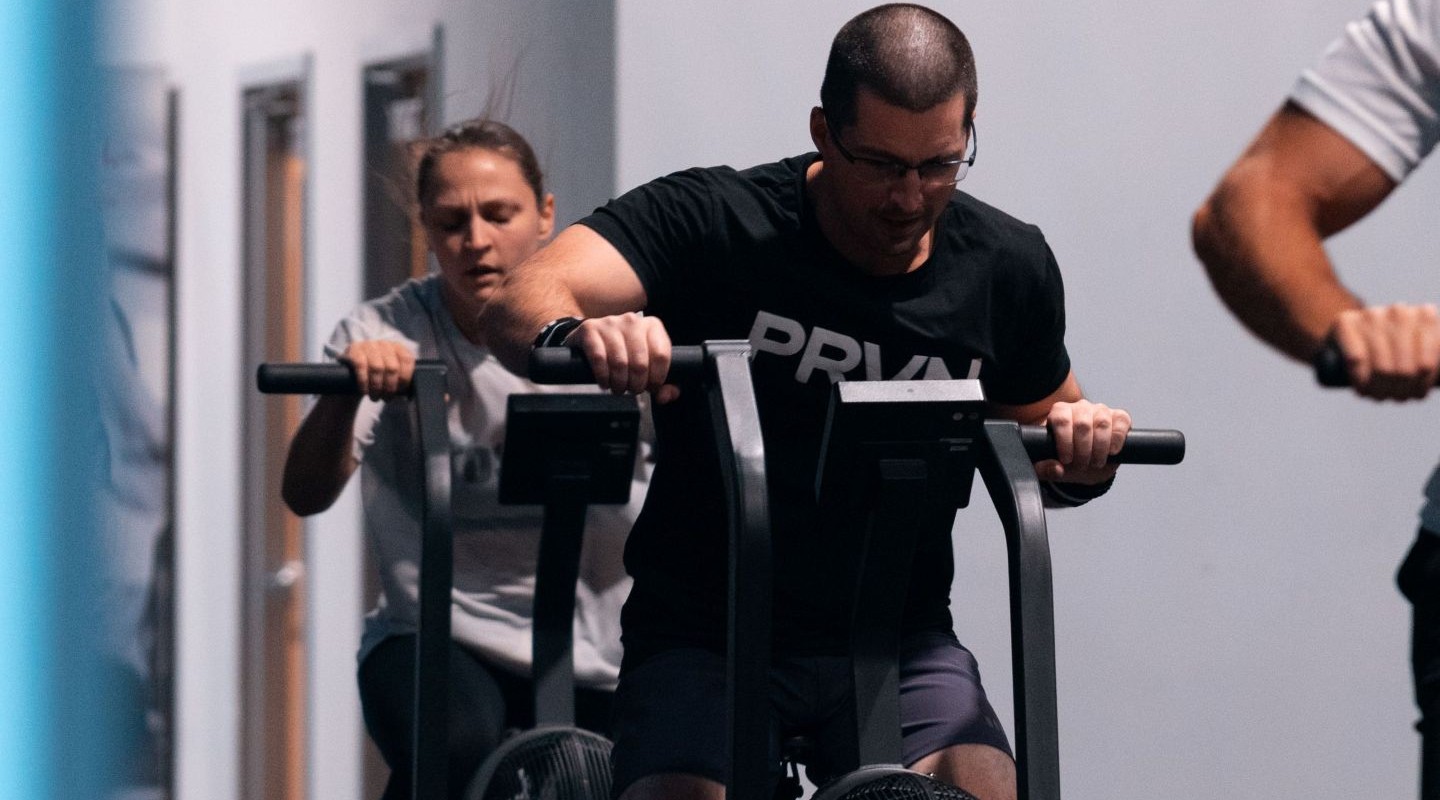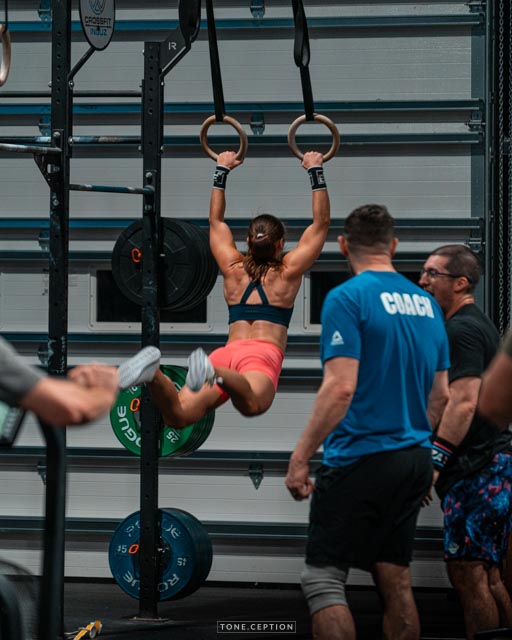By clicking “Accept All Cookies”, you agree to the storing of cookies on your device to enhance site navigation, analyze site usage, and assist in our marketing efforts. View our Privacy Policy for more information.
High Intensity Exercise: Discover the Powerful Balance Between Low, Moderate, and Max Effort
“High Intensity Exercise” is a hot word in fitness, so how much of it do you need to accomplish your goals? The answer: Just enough but not too much. What is Intensity?
By
June 25, 2025

High Intensity Exercise: What is Intensity?
First, a definition.
Intensity is the volume, magnitude, or degree of something. In the gym, we can simplify that to mean “how hard your body is working.” Low intensity means that the body is working at a submaximal level that can be sustained for an extended period. Moderate intensity exercise is when we can sustain a strong effort for a long period of time. At the highest level of intensity, you’re straining at or near maximum effort to accomplish a task, you can’t do this for very long.
Overall, workout intensity can be adjusted in many ways. You can add more resistance to a movement, increase or decrease the speed of the movement, increase the volume (repetitions) of the movement, decrease the rest between sets, and so on. Alternatively, you can use combinations of these and other elements to increase overall intensity.
An example: Imagine walking 50 meters once every three minutes for three sets. Then imagine sprinting 100 meters 4 times in eight minutes while wearing an eight-pound weight vest. The sprinting workout is much more intense in every way.
You can utilize both low- and high-intensity exercise to enhance your fitness. For example, lower-intensity training is often used to increase stamina and endurance. Higher-intensity training is often used to increase strength and power.
In recent times, intensity has become a buzzword, particularly in the context of functional fitness and high-intensity interval training (HIIT) workouts. Athletes and trainers alike talk about intensity all the time, and it’s easy to think that more is always better.
But that isn’t the case.
How is high-intensity exercise helpful?
The benefits of high-intensity exercise for the body encompass multiple aspects. At higher intensities, the increase in energy use drives up the amount of energy sourced from carbohydrates. The harder you work, the more calories you burn off from the food you ate before exercising. This is why, when you are about to engage in an intense activity, you should consider eating or drinking a light meal with some carbohydrates an hour or two before.
Another benefit of high-intensity exercise is improving the function of the cardiovascular system. The more we increase our heart rate and maintain it at a sustained pace, the stronger our heart becomes. Just like any other muscle in the body, the heart becomes larger when we exercise. More specifically, the left ventricle wall thickens, which is the chamber of the heart that pumps oxygenated blood through the body, providing oxygen to the body's cells.
What about Low and Moderate Intensity?
The benefits of low- and moderate-intensity exercise are just as significant. When we exercise, we need to use every part of our body in every way possible so it stays strong and healthy, including low- or moderate-intensity exercise. Probably the most beneficial aspect of low- to moderate-intensity exercise is the energized feeling that follows a workout. Instead of feeling completely spent of energy, lying on the ground rolling around in pain from the intense workout you just did, you might even feel like going for a long run.
Why, you might ask? Well, when our bodies start exercising, the liver begins to produce larger quantities of ATP (Adenosine Triphosphate),but it takes time to make a lot of it and requires a lot of oxygen. Only at lower intensities will oxygen be utilized more during the process of creating energy for our muscles to move. Since our body uses oxygen to produce energy, the best source to do that is not carbohydrates but fat. This is why the best heart rate zone for fat burning is lower; however, this can change as you exercise more, so keeping track of your heart rate zones can be helpful.
Additionally, low- and moderate-intensity exercise benefits the immune system by boosting the production of cells that fight disease and help our bodies defend against foreign invaders. Thus, exercise can be helpful in preventing us from getting sick. The caveat to that, high intensity exercise can actually cause your immune system to be suppressed.
How Much Intensity?
While it’s true that intensity can help you get results in the gym by forcing your body to adapt, you’re not going to optimize performance if you push to 100 percent every single day. Eventually, you’ll get beaten up, become overtrained, lose motivation, or even get injured.
Your body needs a precise dose of intensity in each workout, followed by a period of rest. Yes, you need to work hard in the gym. But you also need to work smart and then recover.
Another example: Imagine you want to get stronger in the squat but don’t know how to do it. So, you decide to perform a 1-rep max back squat every single day, then do a host of complex accessory movements for high reps with significant loads. You’ll be sore all the time and probably won’t enjoy training much.
Contrast that unwise approach to this one: Regularly lift heavy loads in different ways to challenge the legs and core at ever-increasing levels, but always give yourself time to recover before the next heavy workout.
With the first approach, you’ll burn out. With the second, you’ll become stronger and stronger over the years.
How much intensity do you need? That can be tricky. Many people adhere to the notion that “more is better” until they become very sore and their performance starts to decline. Others don’t use enough intensity and don’t challenge the body enough to make it change. Some very studious individuals keep precise workout logs to determine the optimal intensity for their training, but they’re rare.
The best plan: Work with a trained fitness professional who can create an exercise plan that’s suited to your goals, preferences, and experience. The coaches at CrossFit Inguz will assist you in finding the appropriate levels of intensity and recovery and then adjust the plan as needed. That might mean reducing workout intensity on a very stressful day or programming a “deload week” after a tough block of training. The methodology of CrossFit includes high-intensity exercise, but we also focus on proper mechanics first, then build consistency before introducing high intensity. In the same sense, everyone is different and feels a level of intensity relative to their own experiences. To find out more about CrossFit visit the main site, which provides another look into what you can expect from us at CrossFit Inguz.
Our coaches are experts when it comes to intensity, and they’ll make sure you get “enough but not too much.”
We’d be happy to discuss intensity and training with you, and we can provide a plan to help you achieve your goals. Book a free consultation with a fitness expert.


